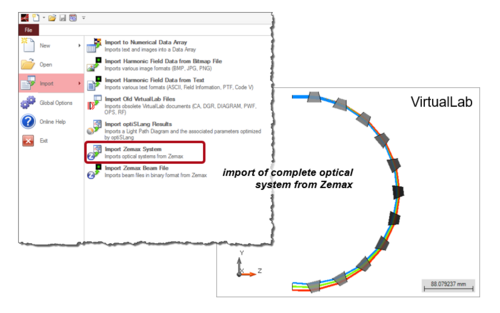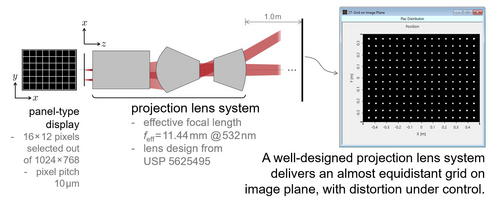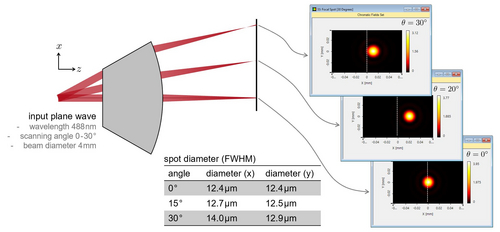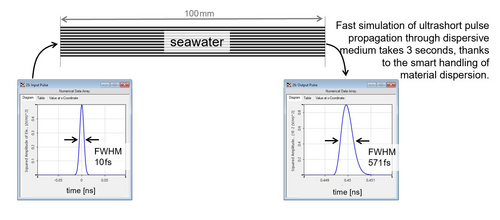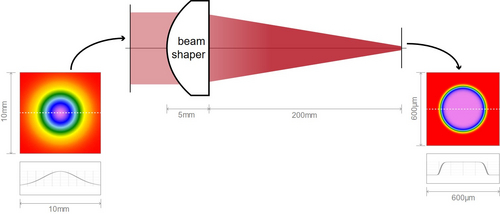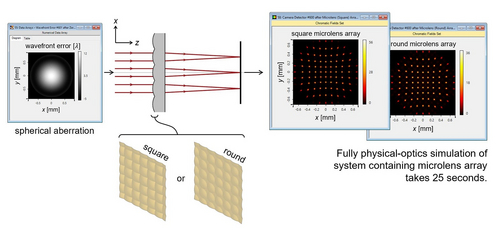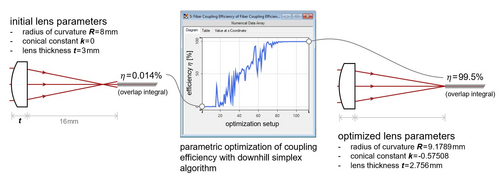What’s new in our Optical Modeling and Design Software?
Import of Zemax Optical Systems and Export for CAD
VirtualLab Fusion offers a user-friendly interface with Zemax, with which the user can import complete optical systems from Zemax, including the full 3D position information and the definition of the glass materials.
This enables an efficient and flexible workflow for optical designers who have access to both software packages - one optical system, constructed once, and analyzed with both Zemax and VirtualLab. On another note, optical systems and components in VirtualLab can be exported into various computer-aided design (CAD) formats, such as IGES and STL, which makes it convenient for eventual further fabrication processes.
Panel-Type Source and Its Use in Imaging System Analysis
Modern display devices (LCD) are widely used in different optical systems, e.g. image projection systems.
The panel-type source in VirtualLab can be used to model the light generated by such display devices conveniently. In order to configure the source a specific number of pixels and pixel pitch can be set. With the help of the panel-type source, the performance of the projection lenses can be analyzed, by e.g. observing the spot grid distortion in the image plane, or by checking the angular/direction behavior of the system.
Scanning Source and Evaluation of F-Theta Scanning Lens
High-quality scanning systems are of importance for many optical applications, e.g. in laser beam welding, drilling and cutting. Such systems are typically constructed with F-Theta lenses. An F-Theta lens is supposed to focus the beam onto the focal plane with a lateral displacement proportional to the scan angles.
With the help of the scanning source in VirtualLab, the performance of an F-Theta lens can be analyzed by e.g. measuring the lateral shift and the size of the focal spot for different values of the scan angles.
Release: VirtualLab Fusion 7.4.0.49
We are pleased to announce the release of VirtualLab Fusion (Build 7.4.0.49)!
The update service must include the 3rd quarter of 2018 to be able to use this update.
Modeling of Femtosecond Pulses
Femtosecond pulses are drawing more and more attentions in modern optical applications, because of their ultrashort temporal duration and the corresponding ultrahigh power. The ultrashort temporal duration also leads to broad spectrums. Such spectral or temporal properties of femtosecond pulses must be properly handled together with their spatial behaviors for the modeling.
VirtualLab Fusion provides such a physical-optics simulation platform capable of femtosecond pulse modeling.
Design of Refractive Beam Shapers
Refractive beam shapers are of great help in several laser-related applications. For example, in material processing, laser beams are often required to have uniform distributions (like top-hat) on the target plane.
In VirtualLab, refractive beam shapers can be designed with a user-friendly workflow, and the design results can be exported directly in those formats most commonly used for fabrication.
Modeling of Microlens Array and Diffraction at Apertures
Microlens arrays can be found in different applications, such as imaging, wavefront sensing, and so on.
With the physical-optics simulation technique in VirtualLab, the working principle of the microlens array, e.g. in the case of wavefront sensing, can be clearly demonstrated, and the performance of such systems can be evaluated efficiently. It is also worth mentioning that the diffraction effect from the edge of the individual microlenses can be taken into consideration in the simulation.
Evaluation of Fiber Coupling Lenses and Their Design
How to ensure a high-efficient coupling of light into optical fibers is an important question in all fiber-related applications.
In VirtualLab, the focal field behind the coupling lens can be easily calculated with the fast physical optics simulation engine, and by calculating the overlap integral, the fiber coupling efficiency can be evaluated. Additionally, with the parametric optimization, the lens parameter can be optimized for customized situations.




